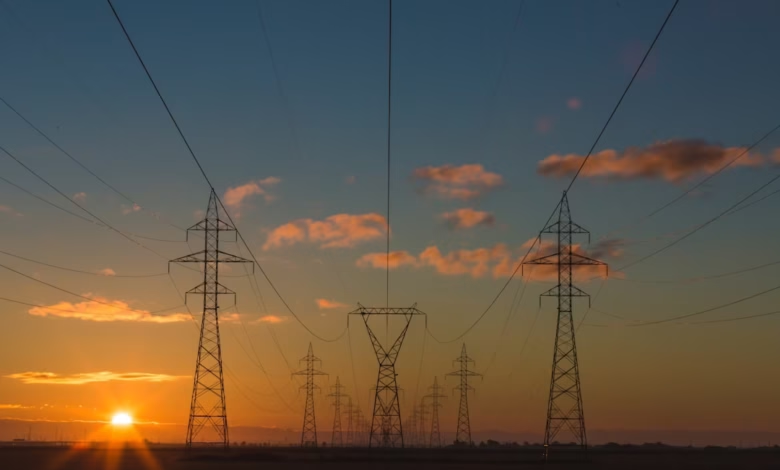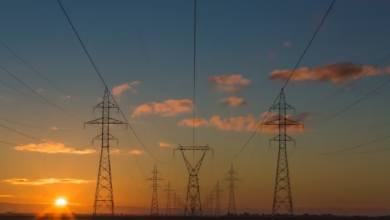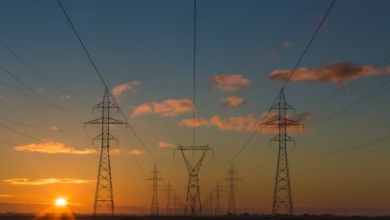Navigating the Energy Transition: From Fossil Fuels to Renewable Energy and Innovations in Energy Security

The energy landscape is undergoing a transformative shift as the world pivots from fossil fuels to renewable energy sources. This energy transition is not merely a trend; it represents a fundamental change in how we produce and consume energy, driven by the urgent need to mitigate climate change and enhance energy security. As global energy markets evolve, key trends in renewable energy—including solar power, wind energy, hydropower, and bioenergy—are gaining momentum, while innovations in energy storage and smart grids are revolutionizing energy efficiency and distribution.
Simultaneously, the role of energy policy and strategic investment is paramount in shaping these transitions, influencing everything from energy imports and exports to the development of carbon capture technologies and hydrogen energy solutions. As we delve into the multifaceted dimensions of this energy transition, we will explore not only the current landscape of renewable energy and fossil fuels but also the innovations that are paving the way for a sustainable energy future. Join us as we examine the critical components of this shift and their implications for global energy economics, security, and climate change solutions.
- 1. Understanding the Energy Transition: Key Trends in Renewable Energy and Fossil Fuels
- 2. Innovations in Energy Storage and Smart Grids: Enhancing Energy Efficiency and Security
- 3. The Role of Energy Policy and Investment in Shaping Global Energy Markets and Climate Change Solutions
1. Understanding the Energy Transition: Key Trends in Renewable Energy and Fossil Fuels
The energy transition from fossil fuels to renewable energy sources is a pivotal movement in addressing climate change and fostering sustainable growth. Understanding this transition involves recognizing key trends that are shaping the future of energy markets globally.
One significant trend is the increasing investment in renewable energy technologies, such as solar power, wind energy, hydropower, and bioenergy. These green energy sources are not only essential for reducing reliance on fossil fuels but also play a crucial role in enhancing energy security and promoting energy efficiency. Countries around the world are ramping up their energy investments to harness these resources, supported by favorable energy policies and incentives aimed at stimulating innovation and adoption.
Another important aspect of the energy transition is the development of energy storage solutions. As the generation of renewable energy can be intermittent, effective energy storage systems are vital for managing supply and demand. Technologies such as batteries and thermal energy storage are becoming increasingly sophisticated, allowing for the optimization of energy transportation and distribution. This is particularly important for decentralized energy systems, where distributed energy resources can be integrated seamlessly into existing grids.
Energy R&D is also critical in this transition, with innovations in hydrogen energy, carbon capture technologies, and smart grids paving the way for a more sustainable energy future. Hydrogen, in particular, is gaining traction as a versatile energy carrier that can facilitate the decarbonization of various sectors, including transportation and heavy industry, thus supporting the global effort to mitigate climate change.
Furthermore, the shift towards electric vehicles (EVs) is reshaping energy consumption patterns, leading to increased demand for renewable energy and energy innovations in charging infrastructure. The intersection of energy economics and policy will dictate how quickly and effectively these changes can be implemented, as nations navigate energy imports and exports while striving for carbon neutrality.
As fossil fuels remain a significant part of the energy mix, especially in developing countries, the energy transition must be managed carefully to ensure a balanced approach that considers economic, environmental, and social factors. Transitioning to a low-carbon economy will require collaborative efforts across sectors, including investments in offshore energy and the integration of advanced technologies.
In conclusion, the energy transition signifies a transformative shift towards a more sustainable energy future. By focusing on renewable energy sources, enhancing energy efficiency, and leveraging innovations in energy storage and transportation, we can create a resilient energy landscape that meets the demands of a changing world.
2. Innovations in Energy Storage and Smart Grids: Enhancing Energy Efficiency and Security
As the world moves towards an energy transition, the shift from fossil fuels to renewable energy sources has sparked significant innovations in energy storage and smart grids. These advancements are crucial for enhancing energy efficiency and security, enabling the integration of various renewable energy technologies like solar power, wind energy, and hydropower into existing energy markets.
Energy storage plays a vital role in managing the intermittent nature of renewable energy sources. With the increasing adoption of electric vehicles and the growth of distributed energy systems, innovations in battery technology, such as lithium-ion and solid-state batteries, are essential. These technologies not only improve energy storage capacity but also enhance energy efficiency by allowing for better load management and reducing reliance on fossil fuels during peak demand periods.
Smart grids are another crucial component of this energy transition. They utilize advanced communication technologies and data analytics to optimize energy distribution and consumption. By enabling real-time monitoring and control, smart grids can enhance energy security, making it easier to respond to fluctuations in energy supply and demand. This is particularly important as energy imports and exports fluctuate, and as nations strive for greater energy independence through investments in renewable and nuclear energy.
Moreover, energy innovations in carbon capture technologies are essential for mitigating climate change impacts while transitioning away from fossil fuels. These innovations allow for the continued use of thermal energy sources while significantly reducing their carbon footprint. As countries ramp up their energy R&D efforts, we are likely to see a surge in hybrid systems that combine renewable sources with hydrogen energy, bioenergy, and offshore energy solutions.
In conclusion, the integration of energy storage solutions and smart grids into our energy infrastructure is vital for achieving a sustainable energy future. By enhancing energy efficiency and security, these innovations not only support the transition from fossil fuels to green energy but also lay the groundwork for resilient energy systems that can withstand the challenges posed by climate change and evolving global energy trends.
References:
– International Energy Agency. (2023). World Energy Outlook 2023. Retrieved from https://www.iea.org/reports/world-energy-outlook-2023
– U.S. Department of Energy. (2023). Innovations in Energy Storage. Retrieved from https://www.energy.gov/articles/innovations-energy-storage
– National Renewable Energy Laboratory. (2023). Smart Grid Research and Development. Retrieved from https://www.nrel.gov/grid/smart-grid.html
3. The Role of Energy Policy and Investment in Shaping Global Energy Markets and Climate Change Solutions
Energy policy and investment are critical drivers in the global transition from fossil fuels to renewable energy sources, significantly influencing energy markets and climate change solutions. As nations grapple with the urgent need to address climate change, robust energy policies are essential for creating a favorable environment for renewable energy development. Governments worldwide are increasingly recognizing the importance of establishing clear regulatory frameworks that not only support the deployment of green energy technologies but also promote energy efficiency and energy security.
Investment plays a pivotal role in shaping global energy trends. The transition to renewable energy requires substantial financial resources to develop infrastructure, such as solar power and wind energy installations, as well as energy storage systems that can enhance grid reliability. The growing emphasis on energy innovations, including hydrogen energy and smart grids, is reshaping energy economics by making energy markets more resilient and adaptable to changing demands. Furthermore, energy R&D is crucial for advancing technologies like carbon capture and thermal energy solutions, enabling a more sustainable energy mix.
As countries move towards energy independence, the interplay between energy exports and imports becomes increasingly significant. Nations rich in natural resources can leverage their fossil fuels while simultaneously investing in offshore energy and hydropower projects. This dual approach not only enhances energy security but also fosters the development of distributed energy systems, which can provide localized solutions to energy needs.
To facilitate this energy transition, public and private sectors must collaborate on energy investment strategies, particularly in emerging technologies such as electric vehicles and bioenergy. By prioritizing funding for these initiatives, stakeholders can stimulate economic growth while addressing climate change challenges. Ultimately, a cohesive energy policy that integrates renewable energy sources with existing frameworks will shape the future of global energy markets and pave the way for sustainable climate solutions.
In conclusion, the energy transition from fossil fuels to renewable energy sources is not just a necessity but an opportunity to redefine our global energy landscape. With the rise of innovations in energy storage and smart grids, we are witnessing a transformation that enhances energy efficiency and security, paving the way for a more sustainable future. As energy markets evolve, the role of energy policy and investment becomes crucial in steering us toward climate change solutions that prioritize green energy.
The integration of various renewable energy sources—such as solar power, wind energy, hydropower, and bioenergy—alongside advancements in nuclear energy, carbon capture, and hydrogen energy, demonstrates the diverse pathways available for a successful energy transition. With ongoing developments in energy R&D and distributed energy systems, we can expect a more resilient and adaptable energy infrastructure that meets the demands of electric vehicles and other emerging technologies.
As we navigate the complexities of energy imports and exports, the focus on energy economics and investment will be essential for fostering innovation and ensuring energy security. By embracing these global energy trends, we can mitigate the impacts of climate change and build a sustainable future that benefits both the planet and its inhabitants. The journey toward a cleaner, greener energy system is underway, and it is imperative that we continue to support and invest in the technologies and policies that will drive this vital transition forward.





